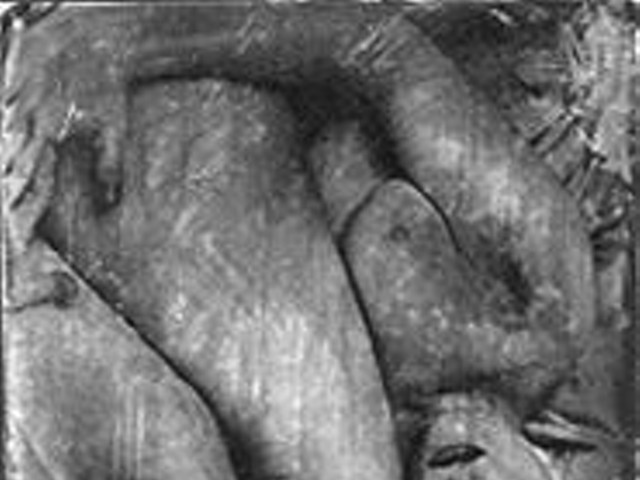Barely a moment in this 90-minute epic was not thoroughly mesmerizing. Josef Brown was a magnificently muscular John, and he danced with head down and arms bent -- almost anticipating his gruesome fate. One stunning pas de deux paired him with tiny Tracey Carrodus as Salome. His movements were stiff and reluctant, and she climbed him the way a kitten goes up an easy chair. The control needed by both dancers to maintain a routine in which only one of them had feet on the ground was staggering. The wide range of physical types was a notable aspect of the company, and though this variety made for an interesting presentation, at times the group was unable to achieve unison.
Still, the production values were spectacular and put one in mind of a Bowie-inspired band on their second or third world tour, when they have money to back up the ideas. An arachnoid lighting rig comprising eight thin pipes enclosed the performance section of the stage. Within this rig, a "cage" dropped from the flies, with a graffiti-covered cloak rising to reveal the writhing prisoner. Upstage, musicians played cymbals, gongs and other percussion instruments (members of the corps also shook maracas). Michael Askill's score was deliberately minimalist and moody -- a cymbal swish, a steady thump and vocoded utterances. It was techno but stately, tense and lulling, and you couldn't wait to see what would happen next. Akira Isogawa costumed the company in rich brown leotards, floating veils and shawls. The look was body-hugging but asymmetrical -- sleeves but no shoulders for some. Brown and Carrodus wore white. And when Carrodus first appeared, swathed in a full-length veil, there was more ghost than sexpot to her moves.
Murphy likes the long line of the body and the swooping majesty embodied by dancers confident of defying gravity. He takes a convention of classical dance -- an arabesque, say -- pairs it with a flippant gesture and slows everything down. Murphy was at his best with the pairs, who often began a sequence circling one another with the uneasy intensity of Greco-Roman wrestlers but concluded with a deadly embrace. Yet, aside from a playful interlude in which Janet Vernon's cheerfully arrogant Herodias played pattycake with her rapacious homunculus of a husband (Bradley Chatfield in spiky devil's horns and a scoliotic hump), why were so many of the relationships underexplored? These dancers are so commanding one yearned for more interaction between Herodias and her daughter, between Herodias and John, if only to supply motivation for all that would unfold. But even with a thin story, this Salome was never less than marvelous. As the ballet came to a close, Salome's dance entailed a flying rig, which bore Carrodus aloft -- rippling scarves and all. And after John was slain, her solo turn was skillfully lit. Her slender, pale figure emerged from the darkness embracing John's head -- still attached to the unseen dancer. How many companies can manage so many supernatural effects?





